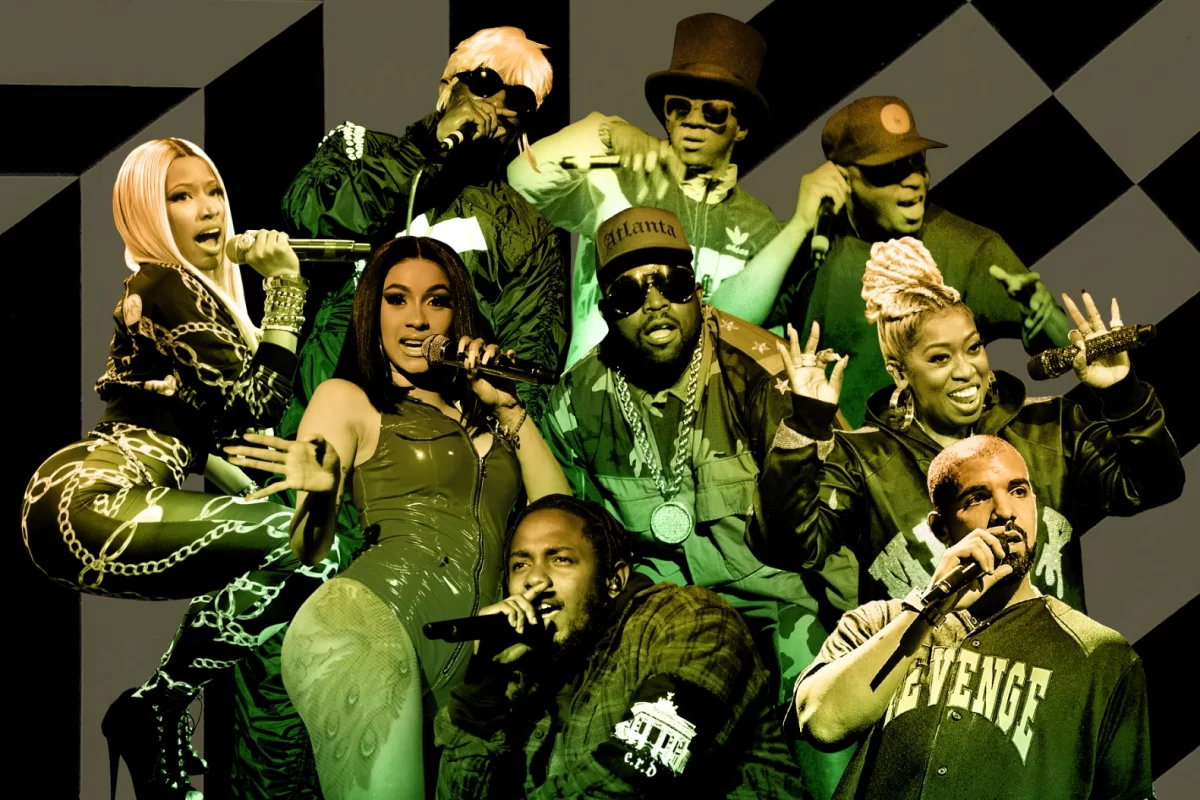I woke up this morning, checked the new hip-hop and rap releases for Friday, Oct. 13, and put on two albums: “And Then You Pray For Me” by Westside Gunn and “A Great Chaos” by Ken Carson. These two albums are radically different.
The first one is a ginormous 21-track album filled to the brim with features — a New York boom-bap record. The second one is a concise, 45-minute southern rage rap album. Each release has its own strengths and weaknesses as a hip-hop record. However, there is one prediction I could make: neither of them will go number one.
The Three Six Mafia legend Juicy J took to Instagram to start a dialogue about hip-hop and its alleged 40% decline in sales.
“Check the charts. Check the math. … What are we, as rappers, producers, composers, going to do about this sh*t?” the 48-year-old rapper said.
And he’s not wrong — hip-hop did not have a number-one song this year until Latto and Jungkook’s “Seven” and didn’t have a number-one album until Lil Uzi Vert’s dramatic “Pink Tape” album back in June.
In 2023, two things have dominated the charts: bro-country and Taylor Swift.
Morgan Wallen, Bailey Zimmerman, Zach Bryan, Luke Combs and Swift have completely taken over the mainstays of the Billboard Hot 200 albums and the Hot 100 singles list. Nothing seems to be stopping them.
Earlier in the summer, I wrote an opinion piece that postulated that there was no dominant song of the summer, primarily due to Tikok not crowning a dominant trend for the year.
This leads to my second observation: is rap declining because it is becoming too niche?
Looping back to Ken Carson and Westside Gunn, these rappers are from two entirely different camps. Carson comes from Playboi Carti’s Opium label and participates in the high-energy mumbly rage movement.
On the contrary, Westside Gunn is a Buffalo, NY native who has been in the east-coast boom-bap and drumless movement that has been building towards mainstream success for the past 15 years.
Jon Caramanica hosts The New York Times’ “Popcast,” a show dedicated to discussing pop music and culture. During their latest episode — released on Thursday, Oct. 12 — Caramanica and guest Jaime Brooks discussed album reviews.
During their discussion, the idea that intrigued me was the notion that one day, there will be way too many genres, niches and scenes, and the market will become oversaturated and crash.
Brooks suggests “there’s no party there” in reference to all of these special little microgenre playlists that are being created every day. This can be true of hip-hop culture.
Old school, mid-school, East Coast, West Coast, southern and Chicago hip hop birthed an incredible amount of subgenres and scenes, but what if consumers and people who decide where music and trends go in the future decide it is garbage? What if it’s happening right now the same way rock has essentially died out?
So, what does that mean for us? Well, it probably means the market shares of pop, country, hip hop and world music might finally be plateauing and leveling out. But it could also mean we won’t see any more SZAs, Kendricks, Drakes, or J. Coles.
Hip-hop might very well be dying, but I don’t think it will ever truly be dead. If hip-hop ever fully diminishes, the culture might never be the same or even any good at all. Streaming has changed music forever. It is up to us to decide for the better or the worse.













